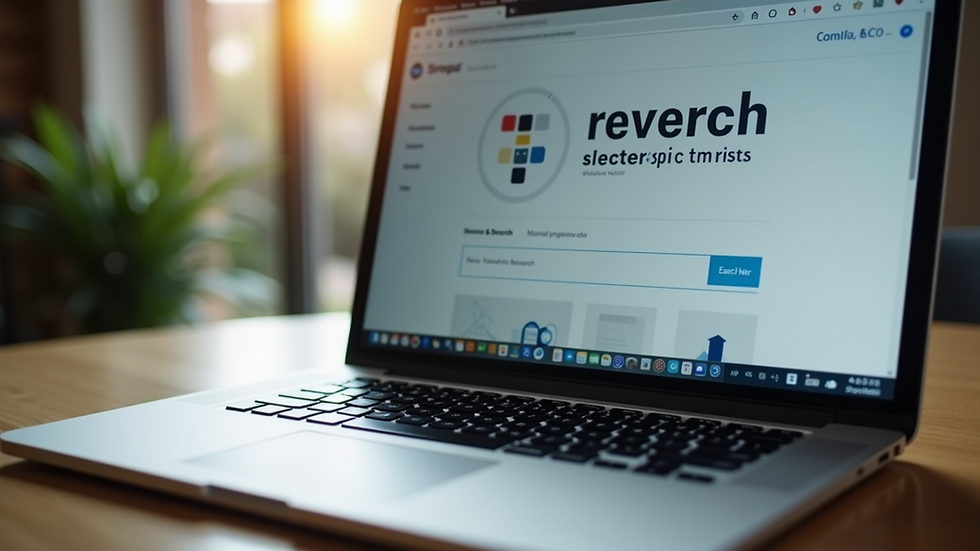Exploring AI's Role in Modern Design Strategies
- Diego Garzon
- Oct 6
- 4 min read
Artificial Intelligence (AI) is transforming the way designers approach their craft. From automating repetitive tasks to generating creative ideas, AI design tools are becoming essential in modern design strategies. This blog post explores how AI is reshaping design workflows, enhancing creativity, and improving efficiency. We will also discuss practical ways to integrate AI into your design process and highlight the future potential of AI in design.
How AI Design Enhances Creativity and Efficiency
AI design tools help designers by automating mundane tasks such as resizing images, generating color palettes, or suggesting layouts. This automation frees up time for designers to focus on more creative and strategic aspects of their projects. For example, AI-powered software can analyze user preferences and generate multiple design variations in seconds, allowing designers to experiment with different styles quickly.
Moreover, AI algorithms can identify patterns and trends from vast amounts of data, providing insights that inform design decisions. This data-driven approach helps create designs that resonate better with target audiences. For instance, AI can analyze social media trends to suggest popular color schemes or typography styles that appeal to specific demographics.
Practical tips to leverage AI design tools:
Use AI to generate initial design concepts and mood boards.
Employ AI for image editing tasks like background removal or enhancement.
Analyze user data with AI to tailor designs to audience preferences.
Combine AI suggestions with human creativity for unique outcomes.

Integrating AI Design into Your Workflow
Incorporating AI into your design workflow requires understanding which tools best fit your needs and how to use them effectively. Start by identifying repetitive or time-consuming tasks that AI can handle. Many AI design platforms offer features such as automated layout generation, content-aware image editing, and predictive analytics.
Next, experiment with AI tools that complement your existing software. For example, plugins for popular design programs like Adobe Photoshop or Illustrator can add AI capabilities without disrupting your workflow. Training your team on these tools ensures everyone can maximize their benefits.
It is also important to maintain a balance between AI automation and human input. While AI can generate ideas and perform tasks quickly, human judgment is crucial for ensuring designs align with brand values and project goals.
Steps to integrate AI design tools:
Audit your current design process to find automation opportunities.
Research AI tools that specialize in those areas.
Test tools on small projects to evaluate effectiveness.
Train your team and establish best practices.
Continuously review and optimize AI tool usage.

The Impact of AI on User Experience Design
User experience (UX) design benefits significantly from AI integration. AI can analyze user behavior data to identify pain points and suggest improvements. For example, AI-driven heatmaps show where users click most on a webpage, helping designers optimize layout and navigation.
Personalization is another area where AI excels. By leveraging machine learning algorithms, designers can create adaptive interfaces that change based on user preferences or past interactions. This dynamic approach enhances engagement and satisfaction.
Additionally, AI-powered chatbots and virtual assistants improve customer support and interaction, providing real-time assistance and gathering feedback that informs design iterations.
Actionable recommendations for UX designers:
Use AI analytics tools to monitor user interactions and identify trends.
Implement AI-driven personalization features to tailor content and layout.
Integrate AI chatbots to enhance user support and gather insights.
Continuously test AI-generated UX improvements with real users.

Ethical Considerations in AI Design
As AI becomes more prevalent in design, ethical considerations must be addressed. Designers should ensure AI-generated content respects privacy, avoids bias, and maintains transparency. For example, AI algorithms trained on biased data can perpetuate stereotypes or exclude certain groups.
To mitigate these risks, designers should:
Use diverse and representative datasets for AI training.
Regularly audit AI outputs for fairness and accuracy.
Clearly disclose when AI is used in design processes.
Prioritize user consent and data protection.
By adopting ethical practices, designers can build trust with users and create inclusive, responsible designs.
Looking Ahead: The Future of AI in Design
The future of AI in design is promising, with continuous advancements expanding its capabilities. Emerging technologies like generative AI can create complex visuals, animations, and even entire brand identities with minimal human input. This evolution will enable designers to focus more on strategy and storytelling.
Moreover, AI will facilitate greater collaboration between designers, developers, and marketers by providing shared insights and automating cross-functional tasks. As AI tools become more intuitive, they will empower even non-designers to create professional-quality content.
To stay ahead, designers should:
Keep up with AI technology trends and updates.
Experiment with new AI tools and features.
Embrace lifelong learning to adapt to changing workflows.
Explore partnerships with AI developers to customize solutions.
By doing so, designers can harness AI’s full potential to innovate and excel in their craft.
Incorporating AI into design strategies is no longer optional but essential. With the right approach, AI can enhance creativity, improve efficiency, and deliver better user experiences. For those seeking advanced design solutions, AI offers a powerful ally in navigating the evolving landscape of modern design.
This exploration highlights how AI design is revolutionizing the creative process and shaping the future of design strategies. Embracing AI thoughtfully will unlock new possibilities and drive success in an increasingly competitive market.




Comments